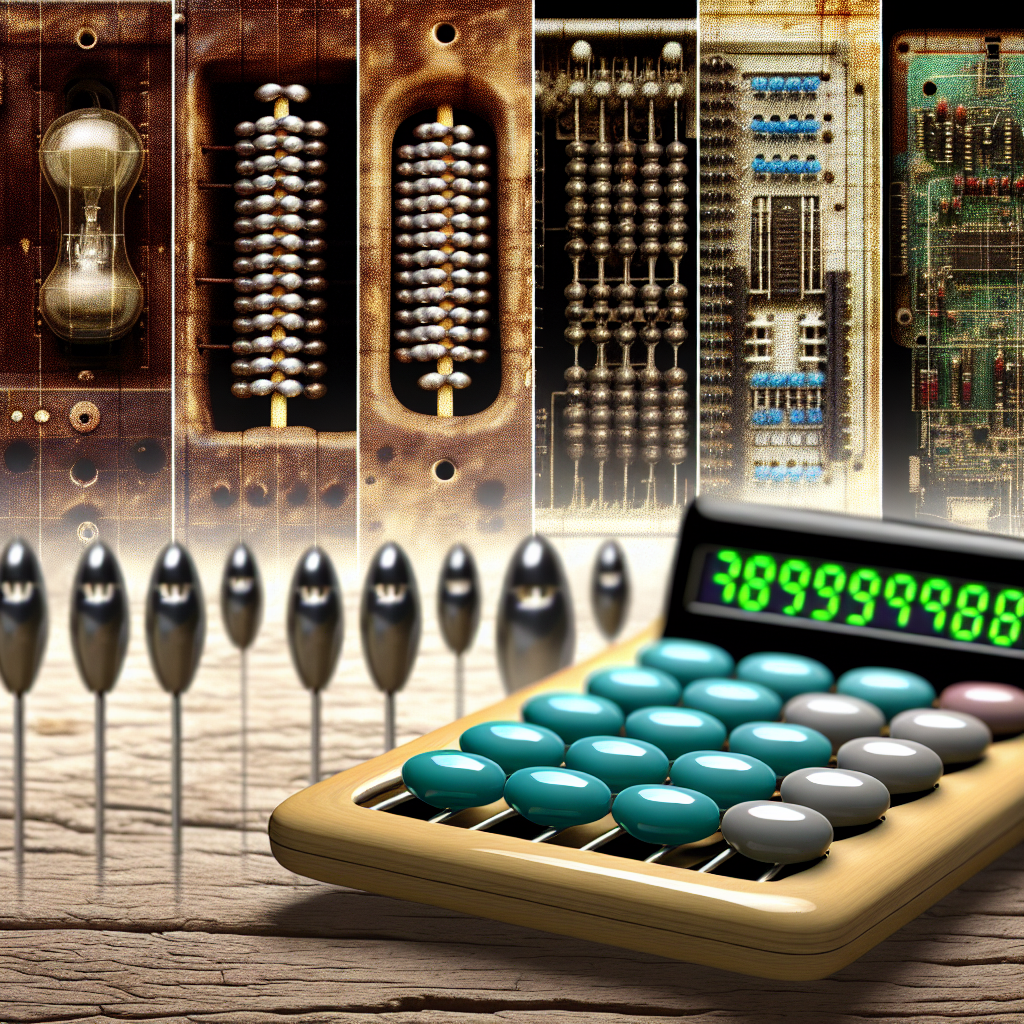The history of calculators is a fascinating journey through time, showcasing the evolution of technology and human ingenuity in making computation easier. From ancient tools to modern-day electronic devices, calculators have undergone significant transformations. This article explores key milestones in the development of calculators.
1. Early Calculation Tools
Before the invention of calculators, humans used various tools to perform calculations.
- Abacus (circa 500 BC): One of the earliest known calculating devices, the abacus consists of rods and beads that represent numbers. It was widely used in ancient civilizations, including Babylonian and Roman societies.
- Counting Boards (Middle Ages): These flat boards with counters allowed for more complex calculations and further popularized arithmetic.
2. The Mechanical Era
The 17th and 18th centuries saw the emergence of mechanical calculators, paving the way for more sophisticated computation.
- Blaise Pascal’s Pascaline (1642): Designed by mathematician Blaise Pascal, the Pascaline was the first mechanical calculator capable of addition and subtraction using a series of rotating gears.
- Leibniz Calculator (1673): Gottfried Wilhelm Leibniz invented a calculator that could perform multiplication and division, advancing the mechanical calculation with its stepped drum mechanism.
3. The Age of Automation
Entering the 19th century, mechanical calculators evolved into more automated devices.
- An Hour Calculator (1801): Joseph Marie Jacquard developed a loom system using punched cards, which inspired future programmable machines.
- Charles Babbage’s Analytical Engine (1837): Although never completed, Babbage’s design for a general-purpose programmable computer laid the groundwork for modern computing.
4. The Electronic Revolution
The mid-20th century marked the transition from mechanical to electronic calculators.
- First Electronic Calculator (1960): The first fully electronic calculator was the ANITA, which was introduced by Bell Punch Company, paving the way for electronic computation.
- Introduction of Pocket Calculators (1970s): With the advancement of microelectronics, pocket calculators became widely available, making computation accessible to everyone.
5. The Digital Age
Today, calculators are available in various forms, including software applications and built-in functions on smartphones.
- Graphing Calculators (1980s): These advanced calculators allowed users to plot graphs, solve equations, and perform complex calculations.
- Scientific and Financial Calculators (1990s-Present): Specializations in calculators expanded the functionalities to meet the needs of students, professionals, and scientists.
Conclusion
The evolution of calculators has dramatically changed the landscape of computation. From simple counting devices to complex electronic gadgets, calculators have played a critical role in mathematics and technology. As we look towards the future, it is exciting to consider how far these tools will continue to evolve.





